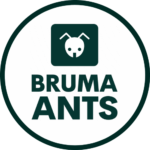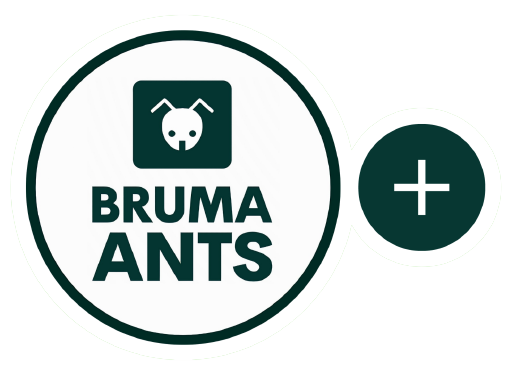Do you want to start keeping ants as pets, but you have no idea where to start? Well, I have some good news for you! You just found the right guide!
Let’s get right into it!
Today we’re going to go through everything you need to know about ant keeping! What is ant keeping, how to start an ant colony, how to catch a queen ant… and much more!
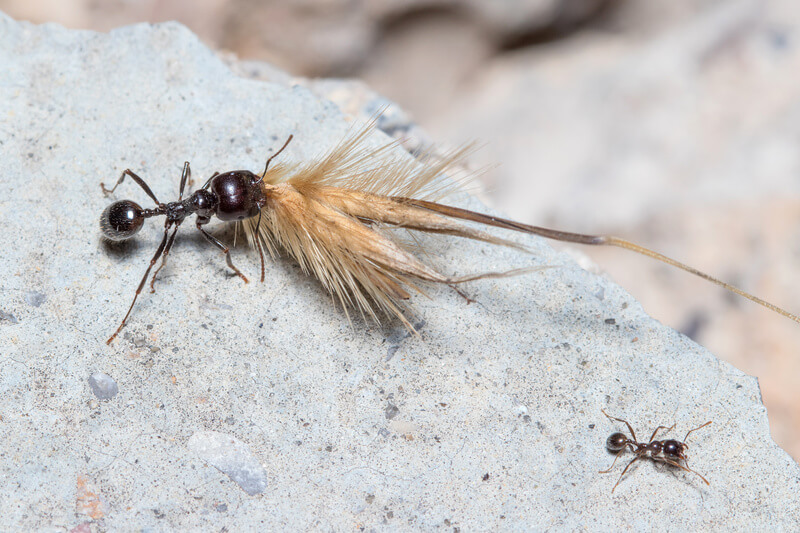
By the end of this article, you will have all the information needed to start an ant colony from scratch, starting from a newly mated queen ant, all the way to a large and prosperous ant empire!
But no more talk! Let’s start exploring this fantastic and underrated hobby right from the beginning!
What Is Ant Keeping?
In a nutshell, ant keeping is nothing more than a term to indicate the hobby of keeping ants as pets. Yeah, you heard right! Ants as pets! All around the world, more and more people are starting to join this amazing and underrated hobby!
This unusual hobby started to become mainstream in the mid-1950s, thanks to the famous entrepreneur Milton Levine. As a kid, he liked to watch the ants work relentlessly all day long, digging tunnels in his backyard and going up and down the driveway in search of food.
As an adult, he created one of the best-selling toys of all time: the uncle Milton’s ant farm!
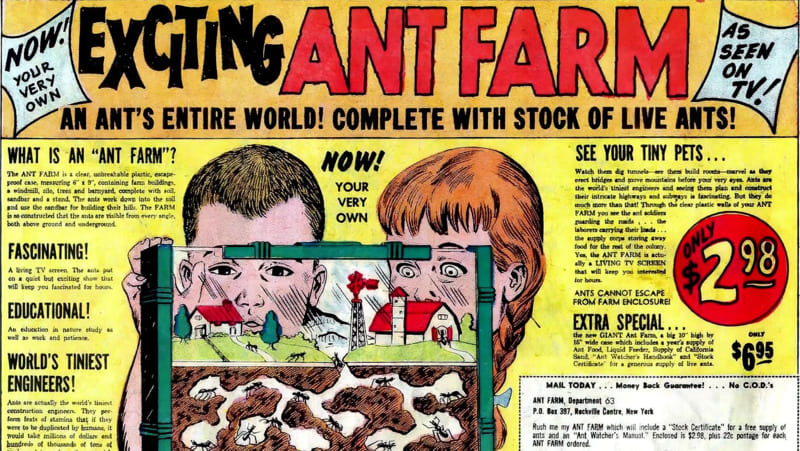

The ant farm was built using the so-called sandwich ant nest setup, which consists of two transparent panels placed together, separated by a small space filled with dirt. With this cool type of setup, the ant keeper can watch the ants dig tunnels in the dirt, and can clearly see everything that happens inside the formicarium!
The toy was so successful, that during the next two decades, Levine sold over twelve million of them!
Since then, the hobby of ant keeping has grown at a steady pace, evolving from a simple kid pastime, to an actual hobby enjoyed by thousands of people all around the world!
In the last decade, the hobby saw an unusual explosion in popularity among the general public. The viral contagion was so big, that now there are actual companies specialized in building and selling products dedicated to ant keeping! Nests, ant food, accessories, and even the ants themselves!
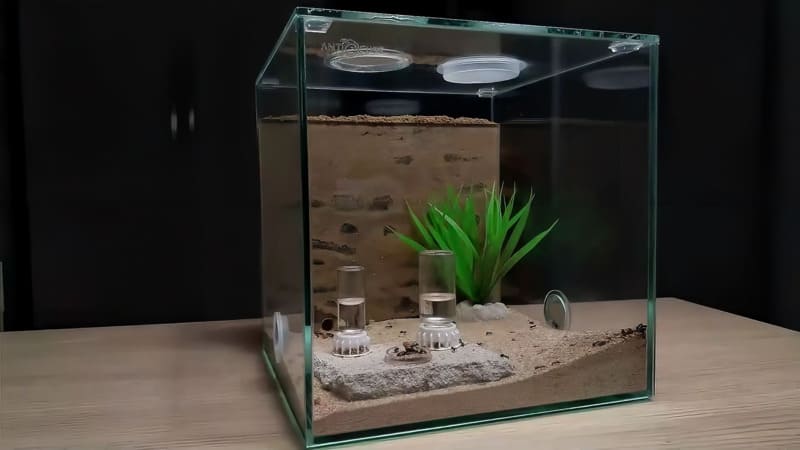

For example, you can check out this other article, in which I make a detailed review of the super cool glass nest in the picture above! This is the perfect nest for beginners, and its unique design makes it one of the best-looking products currently available on the market!
Every year more and more companies start to dedicate their entire time to facilitating the job of the ant keepers, creating amazingly engineered products, and attracting more and more people to the hobby!
But why this obsession with keeping ants as pets? After all, there are much better animals to keep as pets! Right? Well, if you’re not already completely sure about this, let me try to convince you why you should keep these tiny lovely creatures as your pets!
Why You Should Keep Ants As Pets
To better understand why ants are considered to be extremely cool and interesting pets, let’s list five important points in favor of this unusual practice!
Reason Number 1: Ants are fascinating to watch!
One of the biggest reasons to keep ants as pets, is that they are incredibly interesting to watch! Ant colonies are one of the best-organized systems of the animal kingdom!
Ants like to work together to do all the activities needed to properly run a formicarium! They build intricate nests and amazing structures, go outside to forage for food, and take care of the brood, which one day will turn into the next generation of workers!
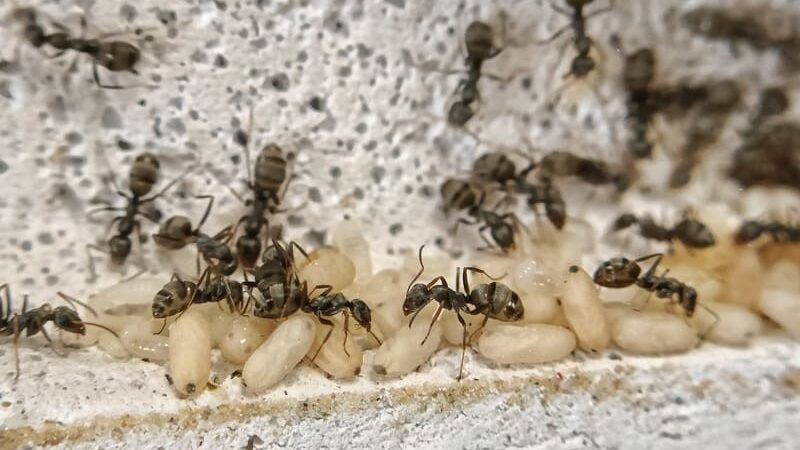

Lots of scientists and myrmecologists consider ant colonies to be like giant single organisms, in which the various components play different key roles in the well-being of the colony!
Watching an ant colony go about its daily activities can be really mesmerizing! And also extremely educational!
Reason Number 2: Ants are low-maintenance pets!
Unlike traditional pets, such as dogs, cats, and birds, ants do not require much maintenance. Actually, they barely require any! As long as they have a proper environment and access to food, they will thrive without much intervention.
Ants only need to be maintained approximately once a week, during which you need to feed them and, if desired, clean their setup. For this reason, this makes them the perfect pet option for busy individuals and families!
They are also extremely easy to feed! They basically need a dose of sugar for the workers, and some protein for the queen and the brood! That’s it! For the protein part, you can give them almost every type of insect, like mealworms, roaches, spiders, or flies.
When it comes to sugars, I would suggest you check out these amazing products! These fantastic sugary liquids are one of the best ways to provide your beloved ants with a healthy source of sugar!
Reason Number 3: Ants are inexpensive to keep!
Another great advantage of keeping ants as pets, is that they are very inexpensive to care for! In fact, you can make your own ant farm for less than $1 using materials that you probably already have lying around your house! This makes them a great pet choice for individuals or families on a tight budget!
By the way, if you are new to this fantastic hobby called ant keeping, you should definitely check out this tutorial! In this one, I explain in detail how to start this hobby with as little as $1! That’s a steal!
Reason Number 4: Ants are great for kids!
If you have kids in your house, keeping ants as pets can be a really fun and educational experience for them!
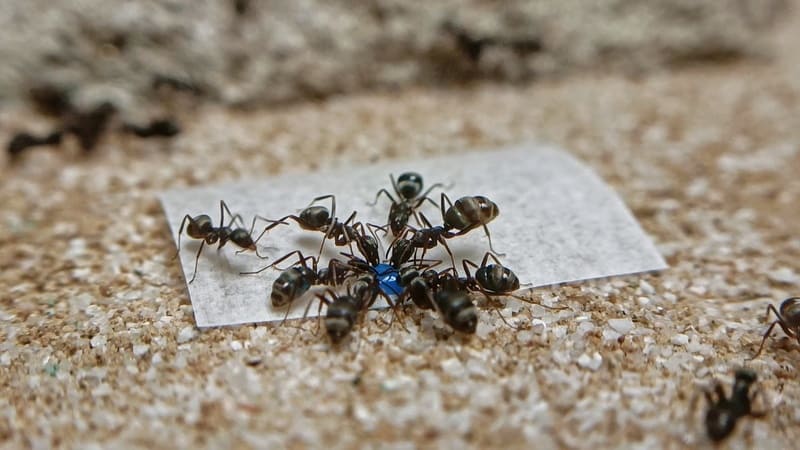

It allows them to learn about these fascinating creatures, understanding every aspect of the life of a worker ant inside the colony! It can even help to teach them about responsibility and caring for others!
Reason Number 5: Ants are easy to find!
Unlike some other exotic pets, ants are relatively easy to find! As you know very well, you can find ants almost everywhere! In your own backyard, in a nearby park, under the pavements, and sometimes, even inside your house!
As you can see, there are plenty of good reasons to keep ants as your pets! They are one of the most fascinating animals to watch, they require very low maintenance, are inexpensive to keep, are great for kids, and are extremely easy to find!
After this long list of convincing reasons, I’m pretty sure you can’t wait to start growing your own ant colony all by yourself!
Now that you know what ant keeping is, and all the reasons to love this hobby, we can jump to the most important part of this guide! Finding the first member of your future ant empire, the queen ant!
How To Catch A Queen Ant
As you probably already know, she is the most important component of an ant colony, and in order to start our own little ant empire, we first need to get our hands on a newly mated queen ant!
When it comes to getting your first queen ant, you have basically two options to choose from: catching your queen by yourself during a nuptial flight, or buying one online. Both are extremely valid ways to start an ant colony, and both can deliver amazing results in terms of personal satisfaction.
If you are not on a budget and don’t mind spending some money on this amazing hobby called ant keeping, maybe buying a queen online would be the better option for you. In this other guide, I explain where you can find queen ants for sale online!
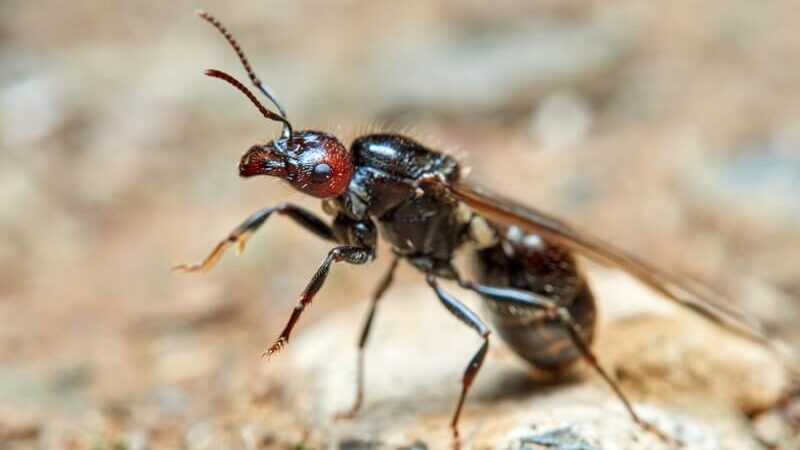

In this article, we will be focusing on catching a queen ant the old-fashioned way, during a so-called mating flight! So, how do I catch a queen ant?
To answer this important question, let’s start by explaining what a nuptial flight is!
What Is A Nuptial Flight?
A “nuptial flight”, also known as a “mating flight”, is a behavior exhibited by certain species of insects in which the males fly high into the air in order to locate and attract potential mates. This behavior is most commonly seen in ants, termites, and some species of bees and beetles.
During a nuptial flight, the males release lots of pheromones, which are particular types of chemicals that are used to communicate with other members of their species, in order to attract females. The males often fly in large groups, creating a “swarm” that can be easily spotted by potential mates.
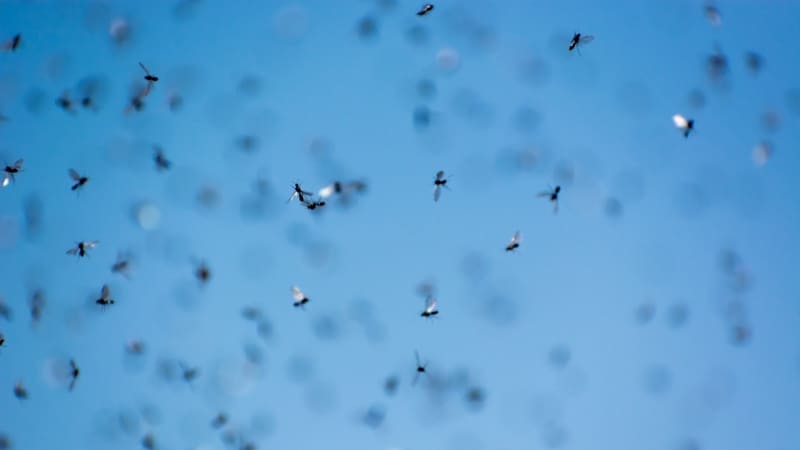

Once a female has been located and attracted to the swarm, she mates with one or more of the males, before returning to the ground to start a new colony. In some species, the males die shortly after mating, while in others they continue to live and mate with multiple females.
Nuptial flights are a crucial part of the reproductive cycle for the majority of species of insects, and play a crucial role in their ability to reproduce and populate new areas. For us ant keepers, this is an extremely important phase, as it provides us with an opportunity to catch lots of queen ants!
One important thing to point out is that not all ant species have nuptial flights, and not all areas will experience them at the same time. These mating flights happen under rare and specific circumstances, such as the right humidity levels, temperatures, and time of the day.
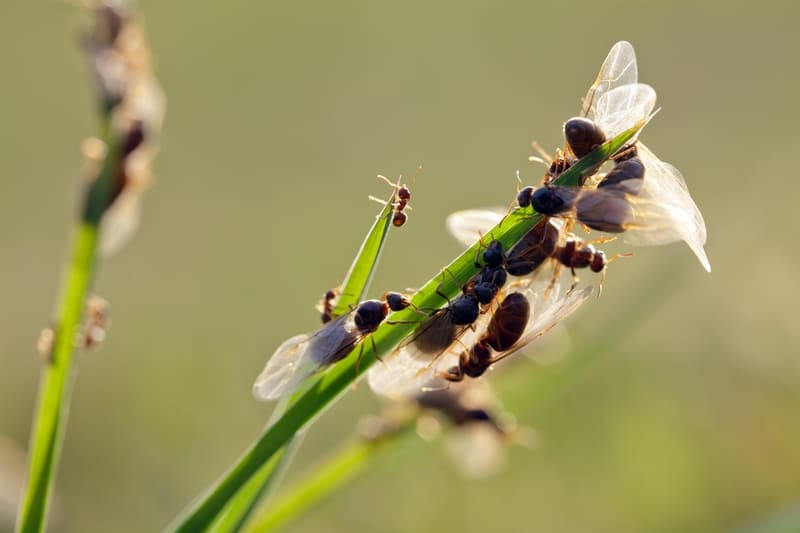

Now that we know what a nuptial flight is, let’s discuss how to spot them, and what factors make them happen.
How Do I Know When A Nuptial Flight Will Happen?
Predicting the exact timing and location of a nuptial flight can be a very challenging activity! However, there are a few general indicators that can help you determine if a nuptial flight is likely to occur.
Many species of insects are sensitive to changes in temperature and humidity, and will only engage in nuptial flights when conditions are favorable. For example, some species of ants only mate when the temperature is above a certain threshold, while others mate when there’s a high level of humidity in the air.
As a general rule, most species of ants tend to swarm during hot and humid summer nights, which typically occur after strong and persistent rainstorms. In these conditions, the environment is typically very wet and humid, making it an ideal time for ants to engage in this spectacular mating behavior.
In these rare circumstances, you will likely see massive swarms of winged ants flying near street lamps, attracted by their strong and bright light.


If you’re interested in these particular behaviors and wanna know more about what types of ants join the nuptial flights, I would suggest you check out this other article! In this one, I explain the different types of ants that we can find in an ant colony!
Now you may be wondering: OK, but what should I do when I see a swarm like the one you just described?
Let’s jump to the next phase!
What Should I Do During A Nuptial Flight?
This is finally our chance to get our first queen ant!
From personal experience, I would suggest you catch more than one queen at a time, as it’s very likely that not all of them will be fertile, and not all of them will survive the founding stage.
In order to catch our queen during the nuptial flight, it is essential to have the right equipment on hand. A little plastic container like this one is essential for capturing the queen, and will function as a momentary home for our precious ant.
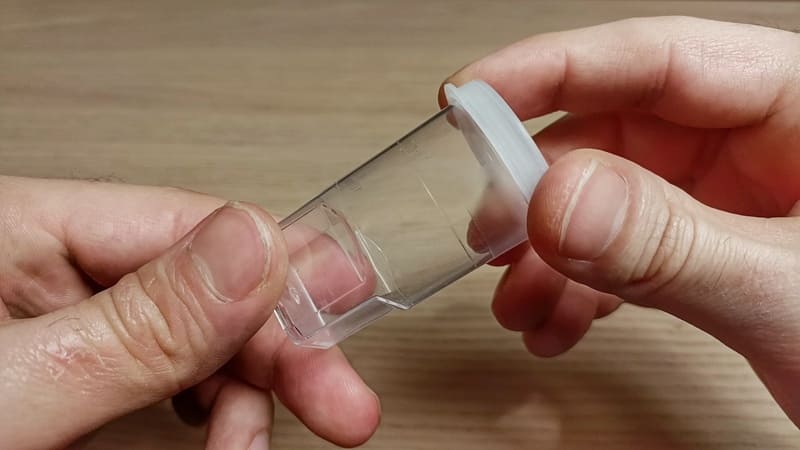

Once you have your equipment ready, it is time to head out near the swarm! If possible, try to position yourself downwind of the swarm, as this will give you a better chance of intercepting the queen as she flies by.
Queen ants are very easy to identify! They are usually a lot larger than males, and they also have a bigger gaster and thorax.
When you spot a queen on the ground or on some nearby plant, gently sweep your little container in front of her, and try to capture her without hurting her. If you are successful, congratulations! You just caught your first queen ant!
Now it’s time to find her a proper house, where she can settle down and start her little ant empire! Let’s jump to the next chapter!
How To Prepare a Test Tube Setup
What is a Test Tube Setup?
The test tube setup is probably the easiest and most effective way to create a comfortable and safe space for a newly mated queen ant! In a nutshell, the test tube setup is nothing more than a normal test tube filled with water, with a cotton ball dividing the water section from the living chamber! Yeah, it’s that simple!
In the wild, after mating with a male, the queen starts searching for a small and quiet space, probably in the soil, where she can start to lay eggs. This tiny space is called “claustral chamber”, and it’s the starting point of every ant empire!
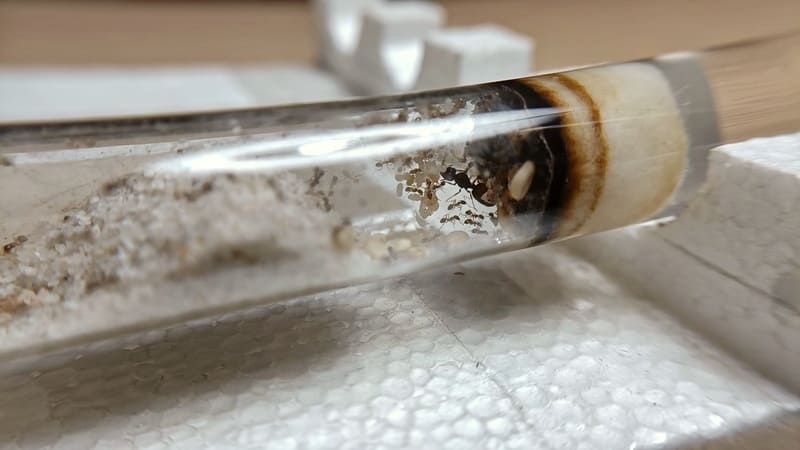

This simple type of setup creates an environment very similar to the one they experience in nature inside the claustral chamber, replicating the same amount of humidity, space, and light.
The test tube setup also gives the ant keeper the chance to see inside the chamber, facilitating the monitoring of the situation and progress of your beloved founding queen ants!
But no more talk! Let’s see how we can make this very powerful type of ant keeping setup!
What You Need
For preparing a test tube setup, we’re going to need a test tube, a pipette, some cotton, and a long stick of some sort.
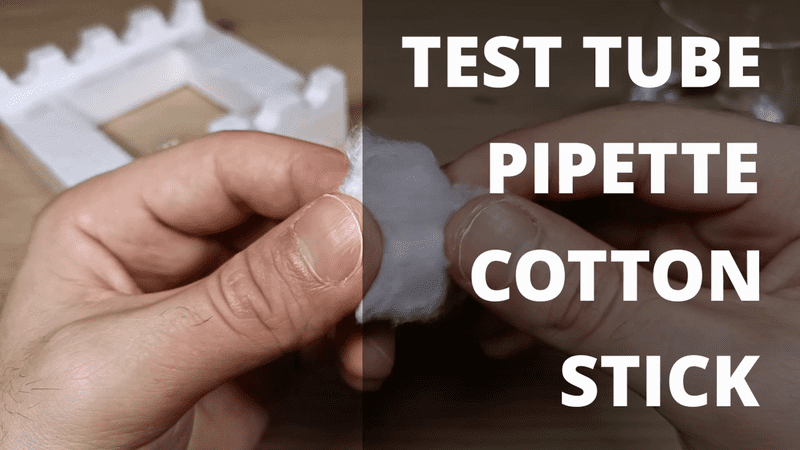

Test tubes come in a lot of sizes. The main factor for deciding which size is right for you, is the size of the queen you want to put in there. For most species of ants, a standard-size test tube will do the trick.
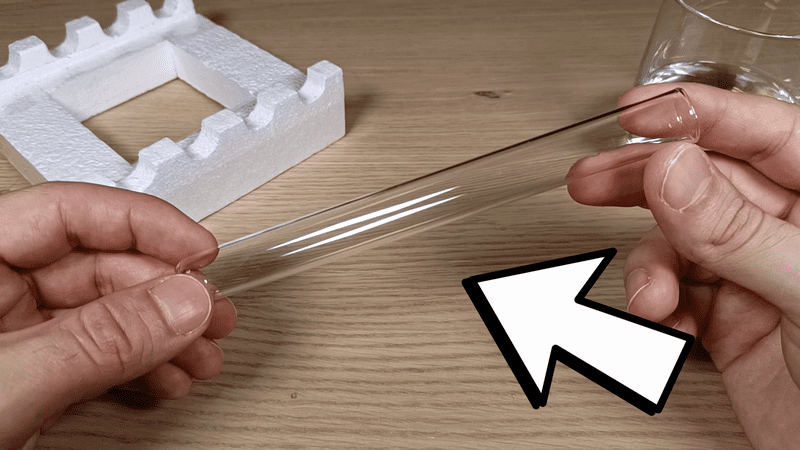

Don’t worry if you don’t have the exact recommended size for your species, the queen is very adaptable, and will surely lay eggs even in a slightly smaller or slightly larger chamber!
Preparing The Test Tube
When you have your test tube, the first thing you have to do is fill up about half of it with clean cold water. You can do it directly from a bottle, from the faucet, or by using a pipette, just like I am doing.


Once you have the water in the test tube, you can then insert a little piece of cotton. To push the cotton ball all the way to the water, you can use a wooden skewer or some sort of plastic tool, like the one I am using.
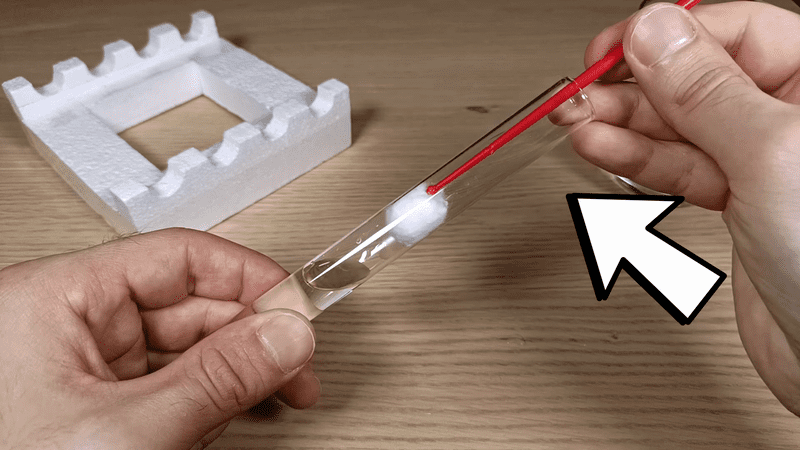

This way the cotton will keep the water from drowning your queen, whilst supplying the chamber with the right amount of moisture! The queen will also be able to drink from the cotton with no problem, eliminating the need for an external source of water.
Be sure to wash your hands carefully before touching the water or the cotton, we don’t want bacteria and mold to start infesting the nest! If you want, you can make the test tube feel even more similar to a real claustral chamber by wrapping it with some type of dark paper! I like to use tinfoil, which does the job swiftly!
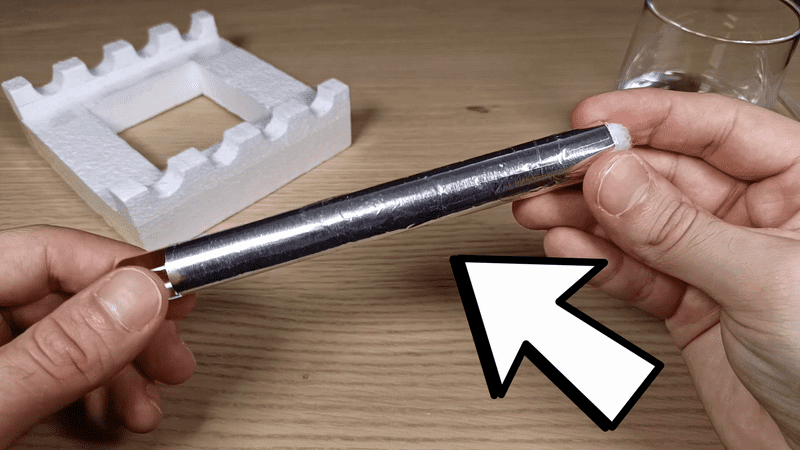

If you like the idea of storing all of your test tubes in the same location, I would suggest you check out this other tutorial! In this one, I explain in detail how to make a test tube holder out of cardboard, just like this one!
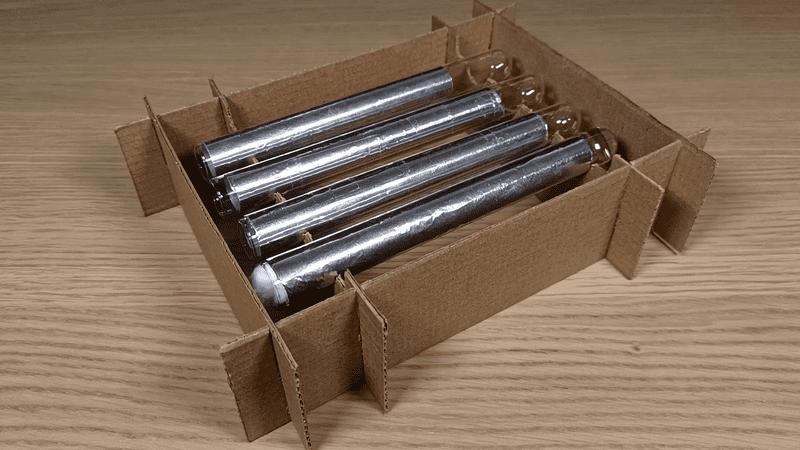

In the event you mess up the process, or you just need to retrieve the cotton plug inside the test tube, you can take it out by using a pair of long tweezers, like the one commonly used in fish tank setups!
Simply insert it inside the test tube and close it, pulling out the cotton ball!
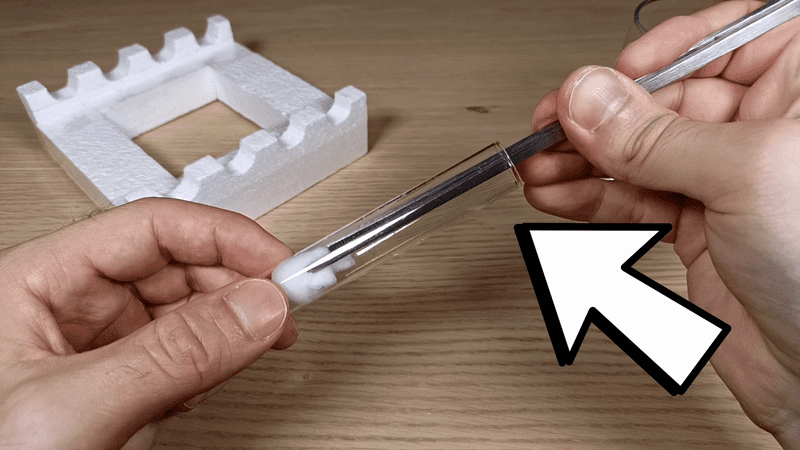

One thing I’ve learned from experience, is that if you put the cotton ball into the test tube very slowly, you will probably end up having some air bubbles between the water and the cotton.
To avoid this issue, simply insert the cotton pretty fast, blocking the bubbles from forming!
If you are wondering how the ants are gonna breathe, don’t worry! There will be sufficient airflow through the cotton for the ants to survive for a very long time!
That’s it! You just made a perfect test tube setup!
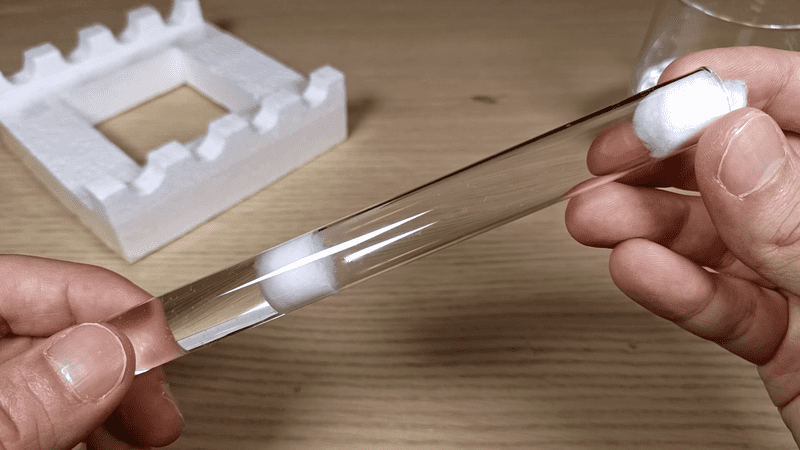


Now we can jump to the next chapter, where you’re gonna learn all the steps you need to do after catching your first queen ant!
What To Do After Catching A Queen Ant
Catching your very first queen ant can be an amazing and fulfilling experience for an ant keeper, especially if you are new to this fantastic hobby!
Watching the queen care for the first generation of workers is an extremely relaxing and enjoyable pastime, and makes you really appreciate how cool and smart these tiny animals can be!
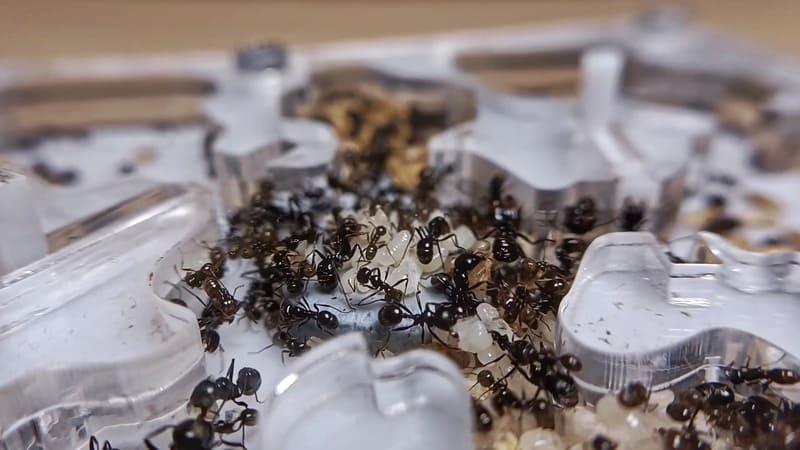

But what should you do after catching your very first queen ant? Let’s start with the first step!
Where Should I Put Her?
Okay, you just caught your first queen ant, and now she’s probably sitting inside some sort of small plastic container. These types of containers are not very good for housing a small ant colony in its founding stage, and they can actually create more harm than good!
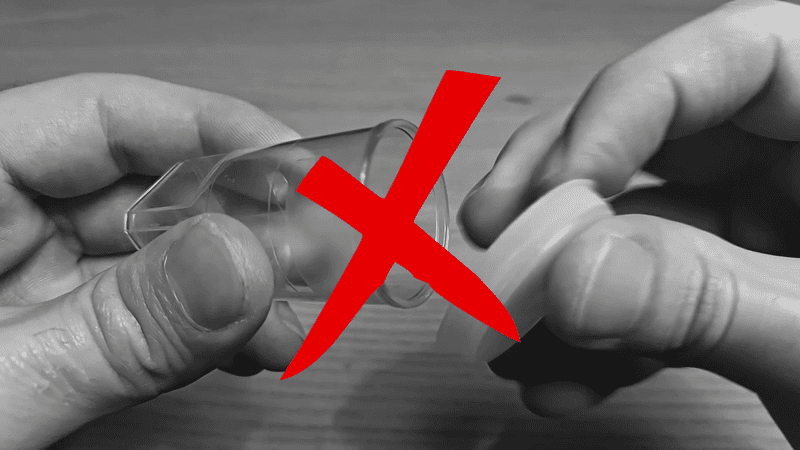

They lack the right amount of humidity, and they don’t have a proper water source. They are also very difficult to maintain, as the living space of the colony is extremely limited.
For these important reasons, we need to create a better founding nest alternative, one which has a water source, some moisture, and it’s easy to maintain.
And here’s where the test tube we made before comes into play! Now that we have our founding nest ready, we can finally move the queen into it!



To do that, just remove the cotton ball to open the setup, and gently make your queen find the path to the test tube. Try to make this as safe as possible, as we definitely don’t want to harm the queen in the process!
When the queen is in, reclose the test tube with the cotton ball.
Fantastic! Now our queen has a proper home, where she can start to lay eggs and raise her own colony!
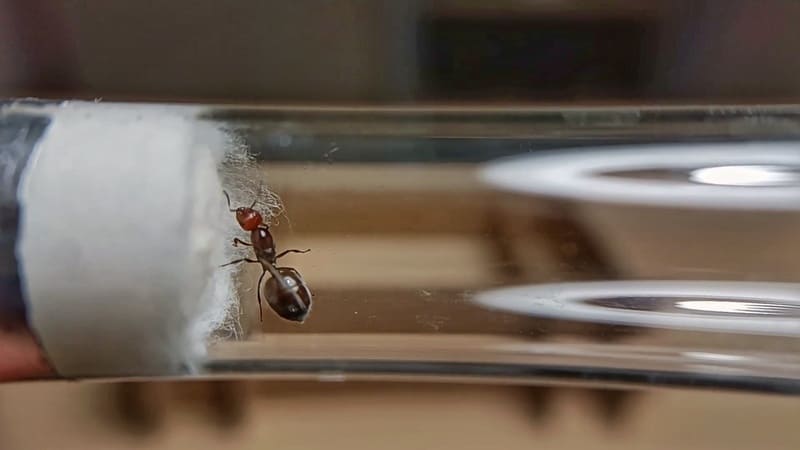

In the next step, we’re going to answer another frequently asked question regarding this important founding stage! Let’s continue!
Should I Feed The Queen?
To answer this important question, we first need to understand the difference between fully claustral and semi-claustral queens.
A fully claustral ant is “a type of queen ant that is able to start a new colony without needing to forage for food”. That’s because this particular type of queen is able to use the nutrients she already has in her body to feed herself and her first few generations of offspring.
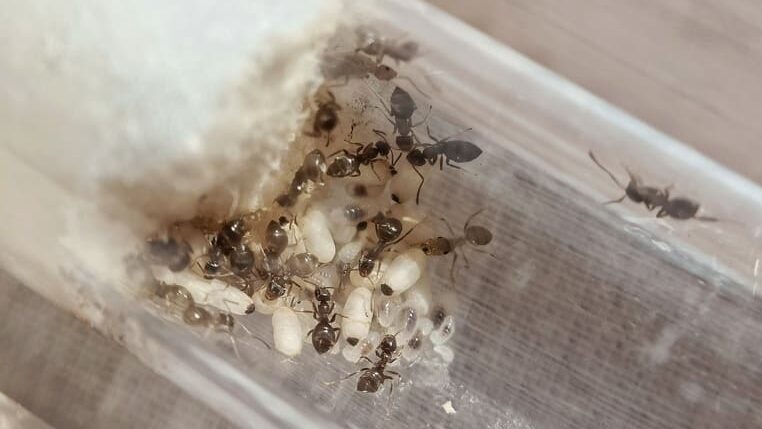

This useful characteristic allows the queen to establish a new colony in a location where food is not readily available, increasing the chance of surviving the founding period.
On the other hand, a semi-claustral queen is “a type of queen ant that doesn’t have this ability, and needs to forage for food even during her founding stage”.
Now that we know the differences between these two types of founding options, we need to check whether our queen is fully claustral or not. To do that, we have to find out which species of ant our queen belongs to.
If you don’t know it yet, you can ask a question in one of the many online forums dedicated to ant keeping, sending them some pictures of your newly caught queen.


When you have the name of the species, check online whether she’s a fully claustral species or not.
As a general rule, you can check the gaster of the queen. If it’s large and voluminous compared to the rest of her body, she’s likely fully claustral. On the other hand, if the gaster is small and thin, she’s probably semi-claustral, and needs to be fed during the founding stage.
However, even if the queen you just caught is fully-claustral, I would suggest you give them a little drop of honey. This little sugar boost will help the queen stay energized during the long founding period, and will also help her first workers during their first days!
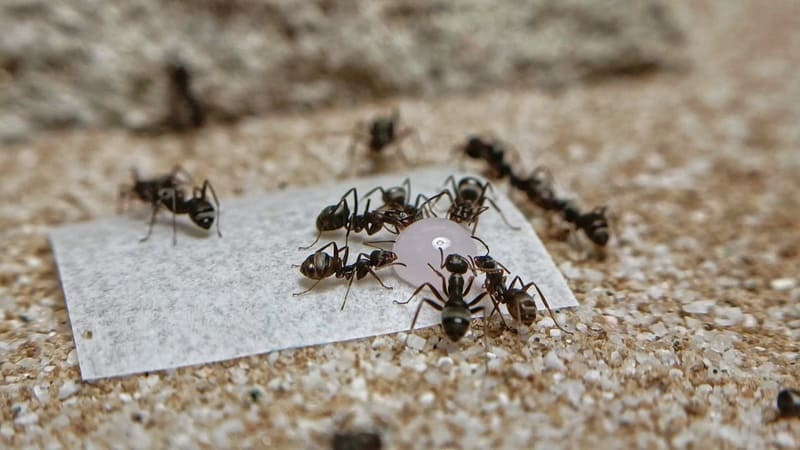

Now we can put the test tube setup and our little queen ant in a safe and quiet place, giving her the time to lay her first batch of eggs and start her own ant colony! This can take from a couple of days if you are lucky, to up to a couple of months if the queen doesn’t feel quite safe!
The most important thing right now is to let the queen do her job in a comfortable and quiet space, without any type of loud noises, vibrations, or rapid light changes. Remember: patience is your best ally!
Now you have all the information needed to start your first ant colony from scratch, starting from a single newly mated queen ant!
I think that one of the most useful pieces of information that a beginner can get to get better at doing something, is a list of the most common mistakes that newbies make!
For this reason, before ending the guide, I want also give you a list of 5 of the most common mistakes beginners make when starting this hobby for the first time! Let’s get right to the list!
5 Most Common Mistakes In Ant Keeping
Let’s start by saying this: Everyone makes mistakes! Every time you start an activity for the first time, you have a ton of information to go through!
This is the reason I think this list of mistakes is very important, and if you are new to ant keeping, I’m sure you will find it extremely useful! Let’s begin!
Mistake number 1: Don’t do enough research about a species
As you probably already know, the world is full of different species of ants! All around the world, there are more than 12,000 of them! They are a lot!
Some of them live on top of the tallest mountains, in extremely harsh weather conditions! Others live at the heart of the hotter deserts, in an environment with the highest temperature on the planet!
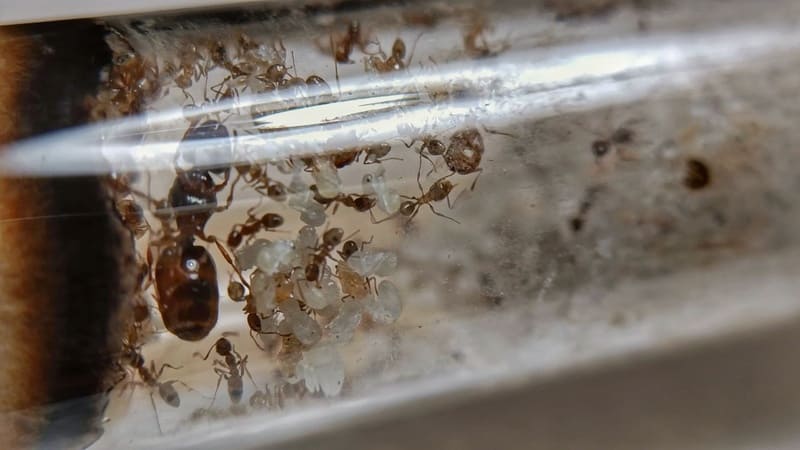

So, as you can imagine, every ant has their own specific requirements. Things like temperature, humidity, and food types can vary a lot between different species of ants.
Your job, as an ant keeper, is to research as much as possible all the peculiar characteristics of the species you wanna keep. You need to know the humidity levels, the temperature, what food they like to eat, and if and when they need hibernation.
If just one of these requirements is not met, you can instantly lose all the progress you’ve made! Remember, do your own research before buying a queen ant online!
Mistake number 2: Checking your queen ant too frequently
So you’ve done all the needed research and now you know everything about your queen? Congratulations! You’re in for an amazing journey!
But now comes the hard part! When the first queen arrives, you don’t think of anything but her! I know the feeling! Every 10 minutes you wanna make sure that she’s doing ok, getting ready to create an amazing and giant ant empire!
And there’s the issue: you start to check her too much! The only thing that a newly mated queen ant needs right now, is a quiet and dark space! Nothing more!
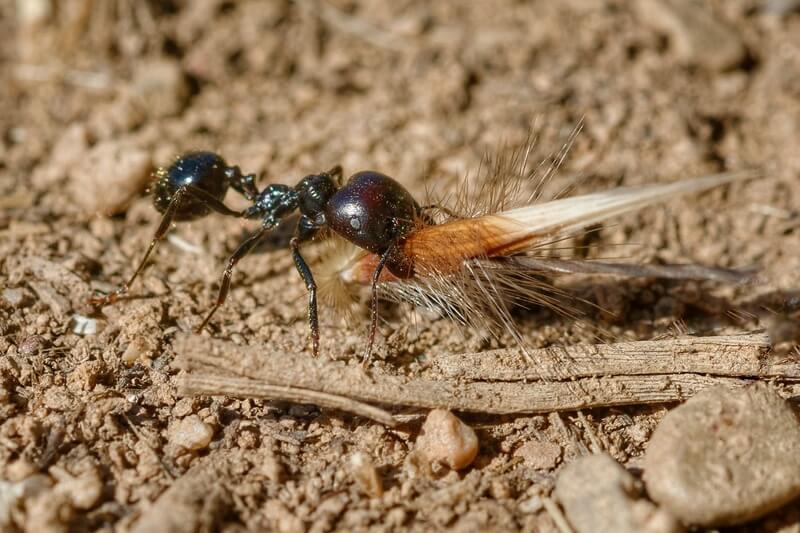

Every time you check how your queen is doing and remove the cover of the test tube setup or the founding nest, she starts to think that the chamber she’s in has been compromised!
She might think that the place where she wants to start her own ant colony is no longer safe! This creates a ton of stress on the queen, and lowers the chance that she will successfully lay her first batch of eggs!
The best thing you can do when you have just caught or bought a queen ant, is to leave her alone in a dark and isolated spot! By doing this, you can be sure that she will successfully start an amazing ant colony!
Mistake number 3: Overestimating the pace of growth of the colony
This one is very common among first-time ant keepers! Usually, when beginner ant keepers catch or buy their first ant, they overestimate the pace of growth of the colony. And in many cases by some margin!
The pace of growth of an ant colony isn’t linear, but is very similar to an exponential function. At the start of the life of a colony, the development is very slow, and the first batch of eggs takes a lot of time to develop into fully formed adult workers.
Some species grow a lot faster than others, but the trend of growth is very similar for all ant species.
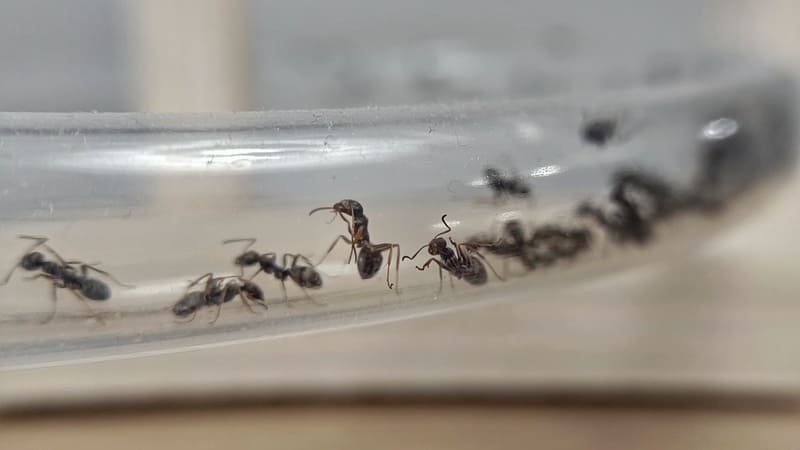

But once the colonies reach a considerable amount of workers, they all start to grow a lot faster! This is probably due to the fact that at the very beginning, all the work in the colony is done by one ant: the queen.
When the colony grows, so does the workforce. With more and more ants doing their part in the colony, the optimizations of the various tasks increase dramatically, enabling the colony to grow a lot faster!
If there’s one thing that beginners ant keepers need, it is patience. A lot of it! This is probably the most important quality needed in ant keeping, and without it, it’s very difficult to obtain good results!
The overestimation of the pace of growth of the colony, almost always leads to another very common mistake.
Mistake number 4: Moving the colony into a nest too soon
This is another very common mistake made by a lot of beginner ant keepers.
Trust me, I know the feeling! You just spent an entire day watching hundreds of videos on YouTube from your favorite ant keepers, and now you think It’s finally time to start your own ant colony! So far, no issues.
The problem starts just after you’ve caught or bought your first queen ant. Now you’re all hyped up, and you can’t wait to put the queen into your amazing new ant nest, bought from your favorite ant keeping store! I can’t blame you, I’ve been there too.
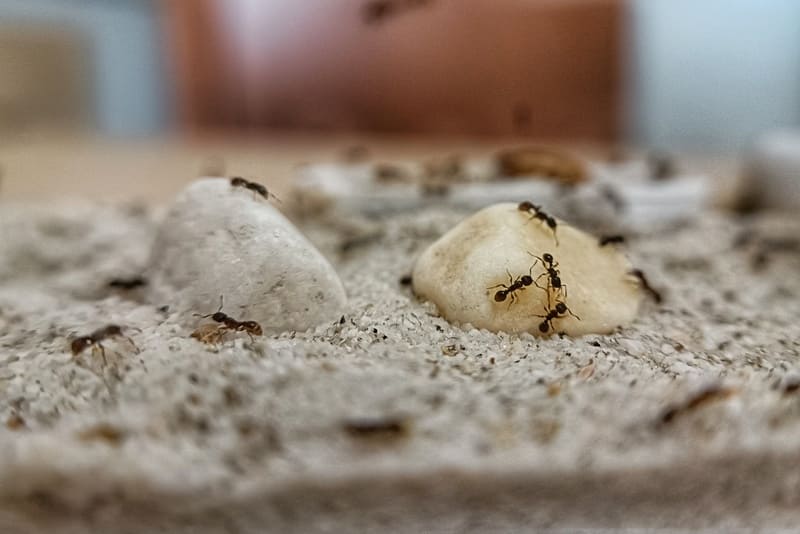

There’s just one small problem in doing that: the queen hates large spaces! If you give the queen a nest with too much space, she will probably start to feel a lot stressed. In a nutshell, the smaller the nest, the safer the queen feels!
The claustral chambers that the ants create in the wild are very small! There is barely enough space to house the queen!
When you have just caught a queen ant, or you have a very small colony with very few workers, the best thing you can do is to keep them in a test tube setup!
Mistake number 5: Buying exotic ants
This mistake is a lot less common if compared to the other ones, but nevertheless, it deserves an important place on this list!
If you usually research ants online, you will almost certainly have encountered some exotic ant species.
As a beginner ant keeper, it is very common to be really impressed by very strange and unusual species of ants. Usually, that’s because these species don’t live in the same area as you, and you’ve never seen one of those.
There’s nothing wrong with keeping exotic species of ants, as long as you don’t release them into the wild and provide them with the right environment!
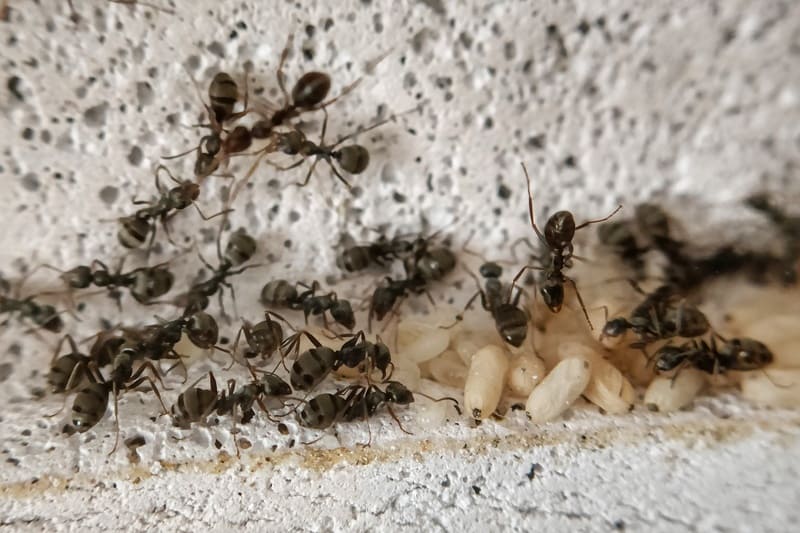

As a beginner, you probably don’t have the basic amount of knowledge needed to safely keep an ant colony yet. For this reason, it’s very important to start this hobby with a local species. With a local species, it is a lot easier to recreate their natural environment, simply because you already live in it, and know the little details that you can’t find online!
You know how the temperature varies throughout the year, when the ants start to exit from their nests in the spring, and what are their favorite food types. You can get this precious information just by looking at the ants in your backyard!
So, for this reason, I would suggest you start ant keeping with a local species of ant, and start to look at exotic species only after having accumulated some experience! If you are a beginner, two of the best species you can get are Messor barbarus and Lasius niger, both extremely easy to care for!
So there they are! The 5 most common mistakes that the majority of ant keepers make at the start of their ant keeping journey!
Conclusions
This list concludes this long and detailed guide on how to start your journey in this amazing hobby called ant keeping!
I truly hope you found it useful and insightful, and I’m sure you can’t wait to start growing your own little ant empire! I wish you the best of luck with this new adventure!
Real-world impact!
Thanks to the BRUMA Ants Plus subscribers and our partner Ecologi we are planting lots of trees all around the world! Click on the Ecologi logo to see the real-world impact of this amazing community!
Join our Discord!

